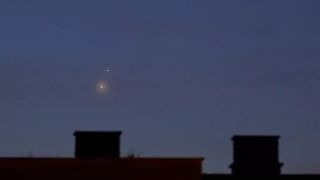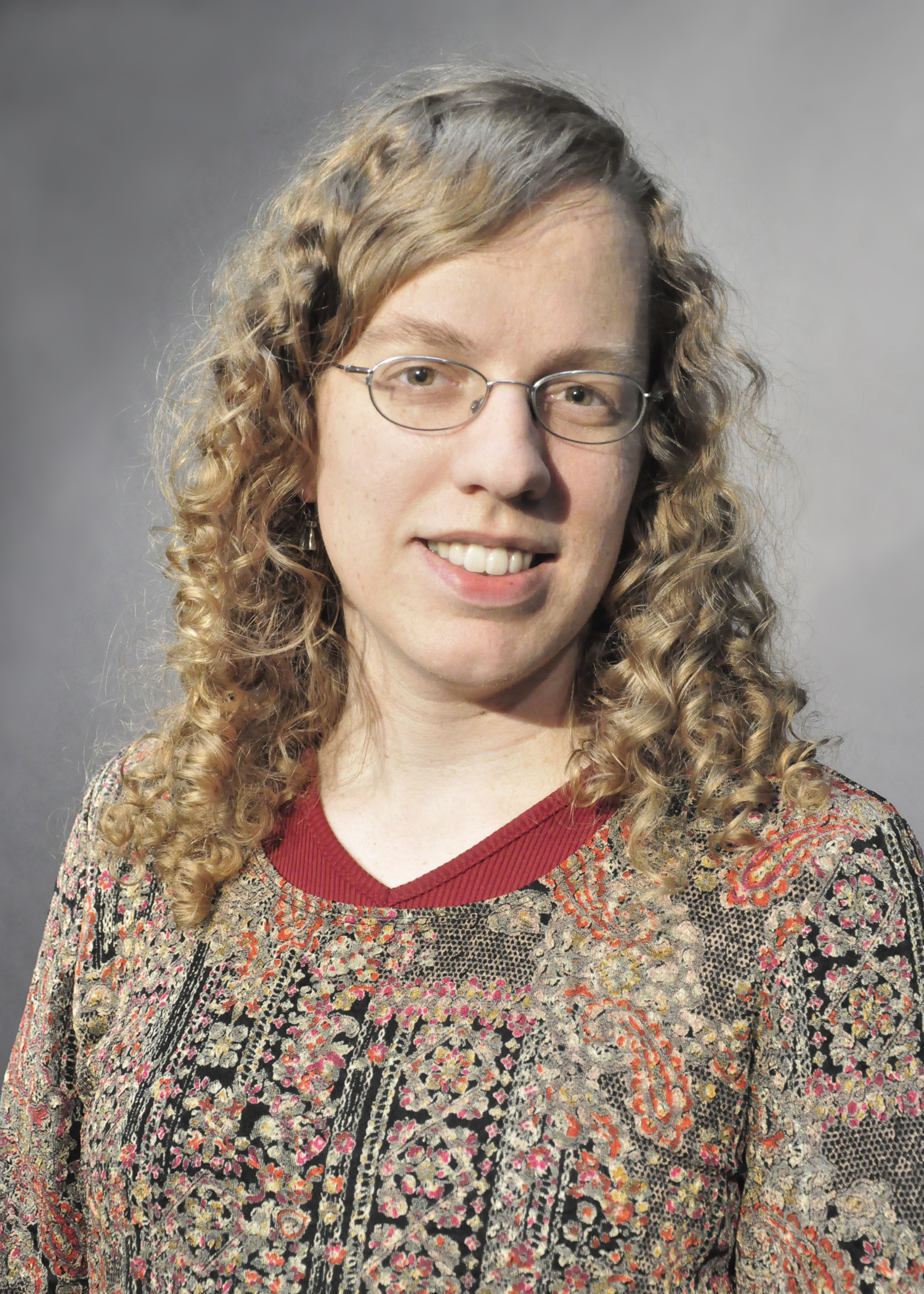Fuzzy 'halo' envelops Venus as it cozies up to Jupiter in photo of planetary conjunction
A thin cloud over the planets created a colorful 'corona' around Venus.
An astrophotographer captured a beautiful picture of two planets aligned in the sky above Rome — and a little rain didn't stop him.
Gianluca Masi spotted Venus and Jupiter hiding behind a thin cloud shortly after scuttling a planned livestream of the conjunction Sunday (May 1) on his astronomy broadcast service, the Virtual Telescope Project.
"Luckily, I had my imaging gear ready to go on a sturdy tripod, when suddenly I could spot the bright planetary couple through a less dense layer of clouds," Masi told Live Science, adding he could even see three of Jupiter's moons — Europa, Ganymede and Callisto.
But a rainy bonus came as he looked at the planets. "I noticed a colorful corona around Venus. That was due to diffraction of its light by individual small water droplets. So that thin cloud was precious," he said.

Masi estimated the two planets were roughly 21 arcminutes apart at the time of the shot, as close together as two-thirds of the angular size of the moon. "I used a Canon 5D mark IV body + EF 70-200mm f/2.8L IS II USM, working at 200mm-f/2.8. I worked at 400 ISO and the exposure time was 0.8 seconds," he said.
Masi was working from home at the time, in a chimney-dotted view from his balcony on the west side of Rome. He plans to go to a "scenic location" in June, however, when five planets at once will be visible in the sky, to capture the event on a livestream. (That's of course assuming the weather improves.)
"I love these natural events; they always amaze us," Masi said. "I'm always amazed to see how many people from all around the planet love these kind of views. I always invite them to go out and see these kind of things personally, but I know that for many people my live feeds are the only opportunity to see those cosmic shows."
Sign up for the Live Science daily newsletter now
Get the world’s most fascinating discoveries delivered straight to your inbox.
Masi added his mission is to share the beauty of the sky with those living on the same planet as he. "This is the basic idea of the Virtual Telescope Project."
If you're looking for a telescope or binoculars to spot views like this one, check out our guide for the best binoculars deals and the best telescope deals available now. Our best cameras for astrophotography and best lenses for astrophotography can also help you pick the best imaging gear.
Editor's Note: If you snap an amazing photo and would like to share it with Live Science readers, send your photo(s), comments, and your name and location to community@livescience.com.
Follow Elizabeth Howell on Twitter @howellspace.

Most Popular



